Motorola Moto G 3 (third generation, 2015) review
Motorola’s latest budget Android phone is better than ever - but also more expensive
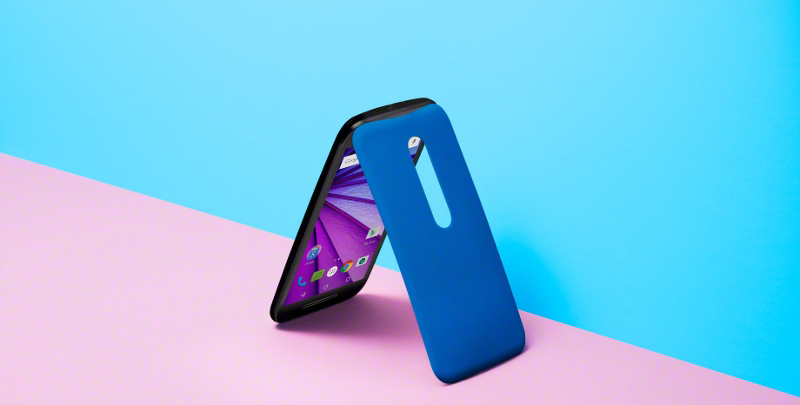

Waterproofing as well as improved camera, responsiveness and casing make this affordable Android phone great value
-
+
Attractive; Sturdy; Improved responsiveness; Better camera; Waterproof
-
-
Muddled specifications and pricing; 2GB model not as bargain priced as previous Moto G phones
Update 6/11/2015 - added information about the Moto G Turbo Edition
Motorola may have a storied history as a mobile phone pioneer, but it's now more well-known for making cheap Android phones - first under the ownership of Google and now Lenovo. The Moto G is Motorola's most popular Android phone, no doubt due to its price - previous versions have been surprisingly cheap for a mid-range smartphone with average prices of around 133 ex VAT.
Motorola has muddied the waters though with the latest third-generation Moto G. While it's a significant improvement over its predecessor, it's no longer an instant chart topper and it's all thanks to a baffling decision by Motorola.
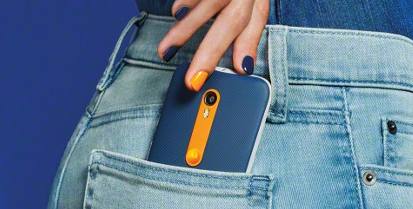
Moto G 3rd gen: price, performance and responsiveness
Confusingly, there are actually two different versions of the 2015 Moto G. One is available with 1GB of RAM and 8GB of built-in storage - the other doubles this to 2GB and 16GB respectively. This fact is obfuscated in Motorola's specifications. Even when buying direct from the company, the fact that choosing more storage also gives you more RAM isn't spelled out.
While this might seem inconsequential at first glance, it's a significant difference. Our review unit was the 2GB variant and, as a result of the extra memory, the responsiveness of the Android interface was noticeably smoother compared to older 1GB-only Moto G phones. Although there was still some lag on occasion, the responsiveness of the touchscreen was nonetheless almost on par with far more expensive flagship Android phones.
Where those more expensive phones still have an edge is in sheer performance. While the Moto G is fast enough for running most apps, its aging 1.4GHz Snapdragon 410 quad core processor and Adreno 306 graphics chip means that it's not especially well-suited for the very latest, most demanding apps such as games with detailed 3D graphics.
Given the advantage of more memory, it might seem obvious to avoid the 1GB model entirely but the 2GB Moto G costs 41 more at 174 ex VAT. This will be off-putting if you're on a very tight budget or are planning to deploy the phone in huge numbers. Even if you're not, the 2GB variant is currently in very short supply.
A Moto G Turbo Edition has been released in Mexico replacing the 1.4GHz Snapdragon 410 with a more powerful quad-core Snapdragon 615. This is the same processor found in the more expensive Moto X Play. There's no word on whether the Turbo Edition will makes its way to the UK, which is a shame, so if you want a faster Motorola Android phone then you'll have to pay more for one of the Moto X range rather than waiting on tiptoes for the Moto G Turbo Edition.
Moto G 3rd gen: camera
The other big change in new third generation Moto G is its camera. Previous generations have had such mediocre or bad cameras that they were only worth using as a fall-back option in case a proper camera wasn't available for whatever reason.
That's all changed. Motorola claims the camera here is the same one found in the far more expensive Google Nexus 6 phablet. Regardless, it's a definite step up. Landscapes were captured faithfully with correct exposure, good colour accuracy and plenty of detail, while portraits were pleasing with accurate skin tones. Its major weakness, as expected, was in low light situations where shots were far too dark and full of noise to be usable.
Still, the improvement in overall photographic quality is nothing short of remarkable. Having a camera this good in a phone at this price is unheard of.
Moto G 3rd gen: build quality
The Moto G is made out of plastic, as expected for a budget phone, but it's well-made and well-designed plastic. The phone feels sturdy, while the grippiness of the ribbed plastic panel gives your fingers extra purchase.
As with previous Moto G phones, the rear panel can be removed and replaced. A huge range of differently coloured variants are available. Some of the more vivid colours won't be to everyone's taste, but we found them attractive.
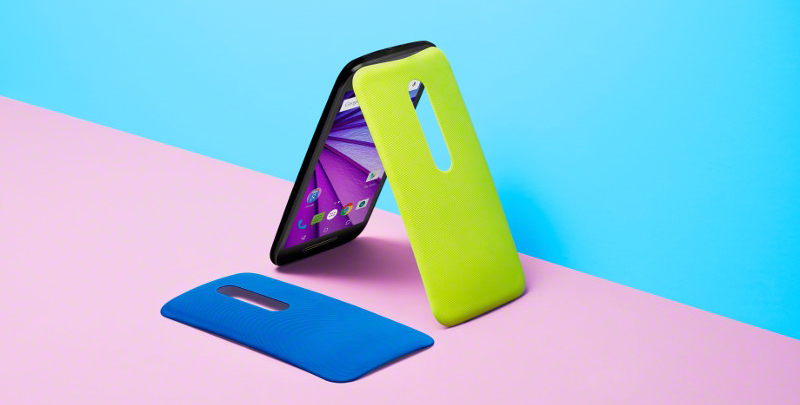
Although the Moto G can now be customised online when ordered from Motorola's Moto Maker' website, the physical customisation options are limited to changing the colour of the metal surround around the camera lens and flash. This is only a very modest level of customisation compared to the more extensive options available for the higher-end Moto X, but having a different coloured camera surround and rear panel do give a touch of individuality to your Moto G, however small.
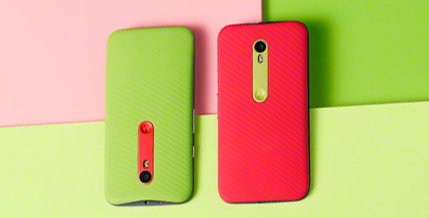
Although the rear panel is removable, the battery is sealed in place and therefore isn't designed to be user replaceable. There is still a micro SD slot, which sits next to the micro SIM slot.
Surprisingly for a budget phone, the Moto G is now waterproof in depths no lower than 1m for up to 30 minutes. You'll have to ensure the back panel is securely snapped into place and, after immersion, ensure the micro USB 2 port is dry before plugging in a cable. These minor caveats aside, waterproofing is very handy whether you're clumsy, frequently caught without an umbrella, work a lot in the field or simply want to get adventurous with your photography.

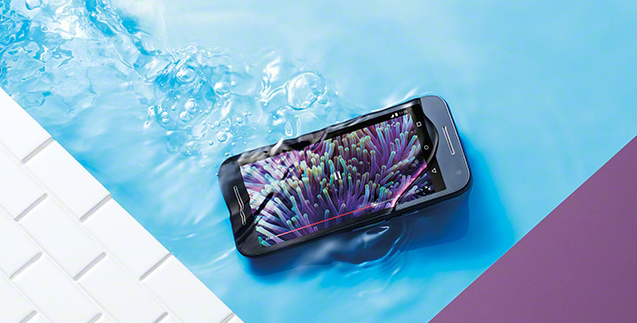
Our only serious complaint is that the rear of our review unit tended to become noticeably hot. There was no pattern to this and our colleagues at Alphr and Expert Reviews haven't experienced anything similar with their review units, so it may be a fault peculiar to our particular unit. We've contacted Motorola and will update this review if we get a reply.
Moto G 3rd gen: battery life and screen
Despite the occasional overheating problems affecting our review unit, it nonetheless achieved very respectable battery life scores for a phone of its size. It lasted just under 12 hours when playing H.264 video on a loop and just over eight hours when browsing the web while connected to an 802.11n router.
When connected to O2's 3G network in central London and used for calls, GPS, photography and web browsing, the battery lasted for a reasonably lengthy 25 hours and 46 minutes.
Although the 720p resolution of the 5in screen might seem lowly compared to the latest flagship phones, it's still more than enough to produce sharp, clear text. It's also very bright with good colour accuracy and reasonably good contrast.
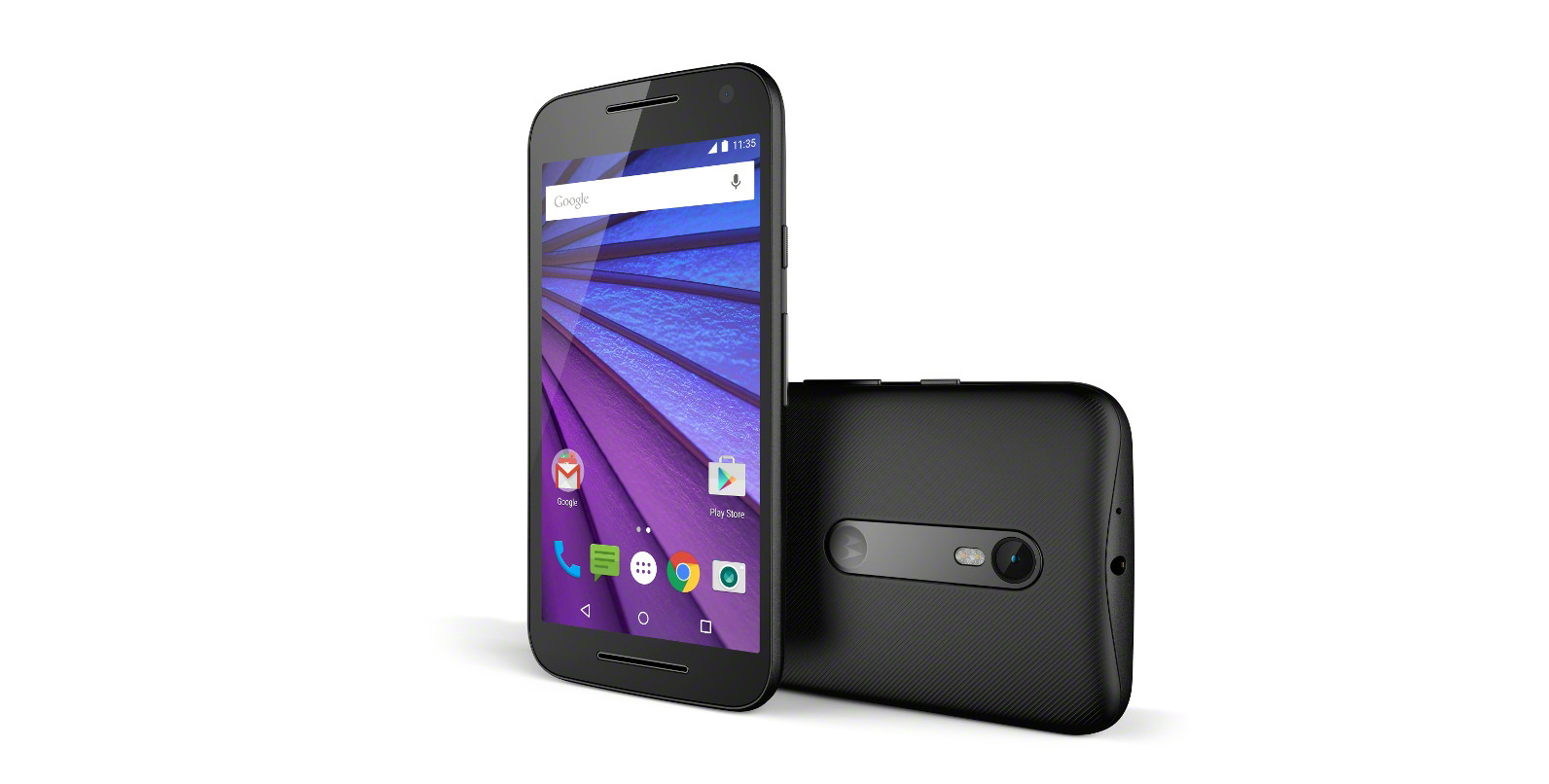
As with all 5in phones though, the screen's height and width make it difficult to use single-handed if you have small hands. It's a shame Motorola didn't apply some of the same design smarts from the first generation Moto X to this phone. That model felt much smaller in the hand and more comfortable to use despite having a similarly-sized 4.7in screen.
Moto G 3rd gen: Android
Like previous Moto G phones, this model comes with an almost untouched version of Android installed. 5.1 Lollipop here has none of the annoying add-on interface gee-gaws that afflict Android phones from many other manufacturers.
Motorola has made some software additions, but they're subtle and can be easily ignored if you don't find them useful. There are some clever gesture controls - simply moving the phone in a double karate-chop motion quickly turns on the flash so you can use it as a torch.
Quickly twisting the phone by flicking your wrist twice will activate the camera, even if the phone is locked. The latter might not sound like much, but we found it to be noticeable quicker than the usual touchscreen-based shortcuts for quickly taking a photo from the lock screen. Anything that increases the chances of snapping that fleeting, special moment is very welcome.
Motorola's do not disturb feature has now largely been superseded by Google's own version of this feature built into Lollipop. One addition not replicated by Mountain View is the ability to have simple black-and-white notifications appear on the lock screen, giving you glanceable information but in a more power-efficient way.
Previous Moto G phones have been among the first to receive new versions of Android, so we'd be surprised if this phone wasn't among the first to get Android M when it's finally released.
Moto G 3rd gen: conclusions
While we wish the Moto G's pricing and specs was clearer and the 2GB model isn't quite the bargain basement must-have that previous Moto G models were, this is still a cracking budget Android phone. Almost every aspect of this phone has been improved over its predecessor with waterproofing an unexpected, but very welcome extra. You can't go too far wrong with the superb Moto G.
This review was first published on 7th August 2015 and has since been updated.
Verdict
Waterproofing as well as improved camera, responsiveness and casing make this affordable Android phone great value
Processor: 1.4GHz Qualcomm Snapdragon 410
GPU: 400MHz Adreno 306
Memory: 2GB RAM
Storage: 16GB on-board, micro SD slot
Connectivity: 802.11b/g/n Wi-Fi, Bluetooth 4.0, 4G
Ports: MicroUSB 2.0, headphone jack, 1x micro SIM
Dimensions: 142x72x12mm (HxWxD)
Weight: 155g
Get the ITPro daily newsletter
Sign up today and you will receive a free copy of our Future Focus 2025 report - the leading guidance on AI, cybersecurity and other IT challenges as per 700+ senior executives
-
 Cleo attack victim list grows as Hertz confirms customer data stolen – and security experts say it won't be the last
Cleo attack victim list grows as Hertz confirms customer data stolen – and security experts say it won't be the lastNews Hertz has confirmed it suffered a data breach as a result of the Cleo zero-day vulnerability in late 2024, with the car rental giant warning that customer data was stolen.
By Ross Kelly Published
-
 Women show more team spirit when it comes to cybersecurity, yet they're still missing out on opportunities
Women show more team spirit when it comes to cybersecurity, yet they're still missing out on opportunitiesNews While they're more likely to believe that responsibility should be shared, women are less likely to get the necessary training
By Emma Woollacott Published
-
 OpenAI wants developers using its new GPT-4.1 models – but how do they compare to Claude and Gemini on coding tasks?
OpenAI wants developers using its new GPT-4.1 models – but how do they compare to Claude and Gemini on coding tasks?News OpenAI says its GPT-4.1 model family offers sizable improvements for coding, but tests show competitors still outperform it in key areas.
By Ross Kelly Published